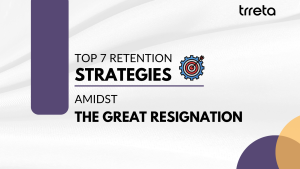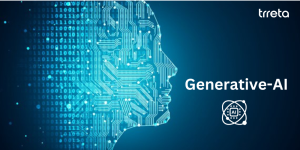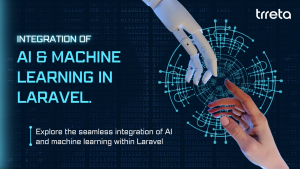NoSQL Database Trends Report 2024
As we move further into 2024, the landscape of NoSQL databases continues to evolve, driven by the increasing demands of modern applications. The rise of big data, real-time analytics, and cloud-native architectures has spurred significant advancements in NoSQL technologies. This report delves into the key trends shaping the NoSQL database ecosystem in 2024, highlighting the latest developments and future directions.
The NoSQL Database Market is poised for significant growth over the next few years. With a projected magnificent CAGR from 2024 to 2031, this market is brimming with potential for those ready to seize the moment. Here’s a sneak peek into what you can expect:
In this report, we’ve grouped survey responses for databases into two categories:
- Relational: Includes BigQuery, Clickhouse, Cockroachdb, DuckDB, Firebird, H2, IBM DB2, MariaDB, Microsoft Access, Microsoft SQL Server, MySQL, Oracle, PostgreSQL, SQLite, Snowflake, Supabase
- Non-Relational: Includes Cassandra, Cloud Firestore, Cosmos DB, Couch DB, Couchbase, Datomic, Dynamodb, Elasticsearch, Firebase Realtime Database, InfluxDB, MongoDB, Neo4J, RavenDB, Redis, Solr, TiDB
2024 Key Insights
1. Relational Databases Aren’t Going Away
Relational Databases Remain a Constant. While 43% of respondents say they exclusively use RDMS, 49% of them also use NoSQL. It shouldn’t be too surprising to learn that less than 8% only use NoSQL – with their entrenched usage and such an emphasis on data analysis and reporting, it’s hard to escape the relational database orbit. Developers don’t necessarily like it though – when we analyze what database type developers want to work with, there’s a significant amount of survey respondents (27%, or almost a third) who indicate they don’t want to use RDMS in the future which speaks to an increasing dissatisfaction with RDMS solutions overall. On the flip side, developers who use NoSQL seem to be much happier and prefer to keep using it.

This isn’t the whole story though – not all relational databases are hated. If we dive deeper into the responses for database usage, we can see a few interesting trends that explain the overall sentiment.

Everyone Loves PostgreSQL : PostgreSQL remains the most used RDMS and also the most loved – with relatively few respondents saying they want to stop using it. This could explain why there’s major interest in Supabase (an open source Firebase alternative offering Postgres-as-a-Service). Instead, where we see the biggest dissatisfaction is in older RDBMS like MySQL, SQL Server, or Oracle.
NoSQL is Capturing Interest : On the other hand, the survey paints a bright picture for new or alternative entrants to the database space with surging interest in over 14 products. It’s clear that developers are tired of the “old guard” and looking for new solutions. Some key NoSQL databases developers will be looking at using more in 2024 include: RavenDB, Redis, BigQuery, Supabase, Cassandra, Snowflake, Neo4j, Clickhouse, Cockroachdb, DuckDB, Datatomic, and TiDB.
2. NoSQL Will Be Adopted for Specialist Roles
Orgs Use a Steady Mix of RDMS and NoSQL : This may be surprising, but database preferences and usage don’t appear to differ much across org sizes. Everyone across every org size generally wants to move away from RDMS to NoSQL. In other words, smaller companies are not predominantly leaning towards one type of database over another in comparison to larger companies, and vice versa. This could imply that the choice of database technology is influenced more by the technology’s features and suitability for specific tasks rather than by the size of the organization.
The uniformity might also indicate a technology-agnostic approach in the industry, where decisions are based more on the specific requirements of a project rather than any prevailing industry-wide trend towards a certain type of database.


Emergence of Specialized NoSQL: Less than 8% of developers exclusively use NoSQL which speaks to an overall need to be interoperable with RDMS. The presence of specialized databases like InfluxDB (time-series) and Neo4J (graph database) in the Non-RDBMS category highlights the growing niche areas in database technology. These specialized databases are becoming more important as applications become more complex and require specific types of data processing.
NoSQL Has High Reciprocity with RDMS: Another reason to believe NoSQL will continue to be used alongside RDMS is when analyzing “reciprocity” (that is, developers who use A with B). We can see that NoSQL solutions aren’t being used to necessarily replace traditional RDMS but to augment solutions. The two most popular NoSQL databases, Redis and MongoDB, show between 50-69% reciprocity with popular RDMS databases like MySQL and PostgreSQL. This implies that organizations tend not to use NoSQL in a vacuum but as a way to serve specialized use cases and then integrate them with their RDMS, possibly for analytics/reporting.

3. AI/ML Will Be a Major Driver of Data Demand

With over 44% of professional developers reportedly using or planning to use AI/ML tools in the next year, this use case will be a primary driver of data needs – for NoSQL and RDMS alike.
AI Use Cases Will Continue to Grow : When we group the unique responses to “Miscellaneous Tool” usage in the StackOverflow developer survey, we find the AI/ML category outstrips all other miscellaneous categories by more than 2X (Web Frameworks is its own separate category). Developers who want to use more NoSQL technologies have slightly more interest in adopting AI/ML tech than other developers. Developers who are already using AI/ML tools want to continue using them. 47% of respondents to the JetBrains survey indicated they are building AI-based features into products and services, with an increasing amount (52%) relying on SQL databases for their data sources.




Growing Mobile and Data Integration Needs : There is growing interest across the board in native mobile application development (e.g. React Native, Flutter, MAUI, Ionic) and data tools (e.g. Kafka, RabbitMQ, Spark). After “transactional data,” respondents to the JetBrains survey listed “time series data” and “clickstream data” in their top 10 types of data they analyze. Specialized NoSQL databases like Clickhouse (clickstream) and InfluxDB (time series) excel at collecting this data, but analysis tends to happen with SQL indicating a growing need for ETL solutions with streaming data tools like Kafka and RabbitMQ.
Use Cases Drive Database Adoption : Category trends are the same across all respondents, regardless of interest in database technology – this further adds to our understanding that developers expect NoSQL databases to work for the same use cases they use RDMS technologies.
4. Rise of Niche Clouds and Managed Data
While organizations continue the march toward moving to the cloud, with over 48% of survey respondents saying they host their applications in a cloud service, from a developer perspective, there seems to be growing dissatisfaction with the big three (AWS, Microsoft Azure, and Google Cloud) and a big desire to self-host. There’s also some growing interest in “niche” clouds like Cloudflare, Fly.io, and Vercel, which offer more tightly integrated services or edge hosting capabilities.
Data Solutions Will Need to Bridge the Hybrid Cloud : According to the JetBrains survey, 44% of services are hosted primarily in a hybrid fashion with a mix of cloud and private servers. This still leaves the majority of organizations choosing not to use the cloud. Organizations moving to the cloud will need data products that can still operate on-premise, spanning the mix of private vs. public cloud.

Cost-cutting Putting the Brakes on Cloud Adoption : In the StackOverflow developer survey, the three major clouds (AWS, Azure, Google) are showing some churn when it comes to developer sentiment with a heavy “want” skew towards “N/A” responses – which we can take as wanting to self-host or use private servers. Interestingly, NoSQL developers use platforms more heavily than the general population and still would prefer to outsource hosting (likely due to the horizontal scaling nature of NoSQL workloads which is harder to manage on your own).

Rising Usage of Edge Computing (and Consequently, Data) : With increasing interest in edge-friendly clouds like Cloudflare, Vercel and Fly.io, developers seem to be interested in taking advantage of closer end-user deployments. Many of these platforms offer their own hosted data solutions with a combination of RDMS (Vercel Postgres, Cloudflare D1) and non-RDMS (Cloudflare KV/R2, Vercel Object) storage options that feature edge-replication.
Better Open Source Tooling Makes Self-Hosting More Palatable : With developers happy with and wanting to adopt tools like Docker and Kubernetes, could this explain why so many want to move away from public cloud? Or is it just because the AWS Console is notoriously terrible? Perhaps developers believe it’s worth the elbow grease to use Terraform to manage their own cluster and save on fully-managed service costs.
5. NoSQL Will Increasingly Be Used With Distributed Systems
In the StackOverflow survey, respondents were asked what kinds of processes, tools, and programs were in place at their organizations. We see an increasing trend in organizations adopting modern development practices like creating a DevOps function, using CI/CD pipelines, and implementing more distributed system architectures like microservices.

We can analyze the responses to the “Tools and Tech” survey question further, separating NoSQL developers from the general population. This overarching trend is also reflected in individual tools, as we can also see increased interest in streaming data tools like Kafka and RabbitMQ, as well as “Big Data” tools like Apache Spark and Hadoop

Software Developers Generally Dislike Infrastructure Tools : There’s a general distaste for infrastructure tools across the board with the majority of tools showing decreased interest in “wanting to use” next year, whether it’s frontend or backend infrastructure. This makes sense as wrestling with tooling takes away from working on features and software development activities.

While developers are looking to use less Docker, they seem to want to use more Kubernetes (or “k8s” for short). This could be a symptom of Docker’s recent and a move to more open source friendly tooling. Since Kubernetes is designed for scaling and orchestrating container infrastructure, this could drive more demand for NoSQL solutions that are designed for better versioning for modern DevOps workflows since databases generally are difficult of version.
Tooling Will Become Easier and More Streamlined : Modern tools like Vite, Terraform, Cargo, pnpm, and Podman all offer a better developer experience, performance, and less friction than the tools they are meant to replace. This indicates developers will want to see increasing focus on developer experience.
Looking Ahead to 2024
As we encapsulate the insights from our comprehensive analysis of the NoSQL landscape, it’s clear that the ecosystem is poised for significant evolution. The trends towards cloud-native solutions, real-time data processing, and flexible data models underscore a paradigm shift in database technologies. NoSQL, with its inherent scalability and versatility, is at the forefront of this transformation.
- NoSQL’s Broader Implications: The increasing adoption of NoSQL databases reflects a deeper change in how data is managed and utilized. Businesses are seeking solutions that offer not just storage, but also analytical capabilities, real-time processing, and seamless integration with other technologies. This shift is driving innovation across various sectors, influencing how data-driven decisions are made.
- The Role of Cloud and Managed Services: Cloud-native and managed database solutions have emerged as key players, offering scalability and efficiency. This trend highlights the industry’s move towards more agile, service-oriented database management, reducing the complexity and overhead associated with traditional database systems.
- Adapting to Market Demands: As the gap between current and desired database knowledge widens, there’s an opportunity for platforms like RavenDB to lead in education and skill development. By addressing this skills gap, RavenDB can not only enhance its user base but also contribute to shaping the future of database technology.
- Strategic Recommendations for Industry Players: For businesses and developers navigating this landscape, embracing NoSQL solutions like RavenDB is not just about adopting a new technology—it’s about investing in a future-proof, adaptable data architecture. The key is to stay informed, adaptable, and open to the evolving possibilities that NoSQL databases offer.



